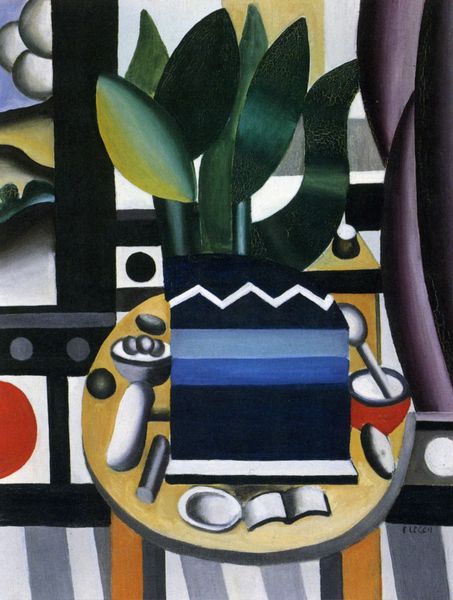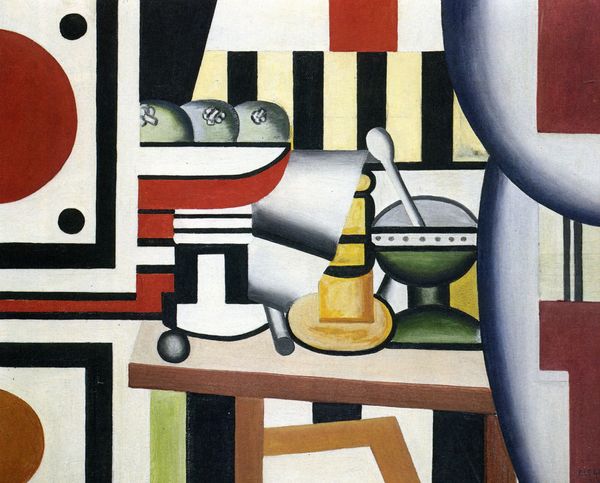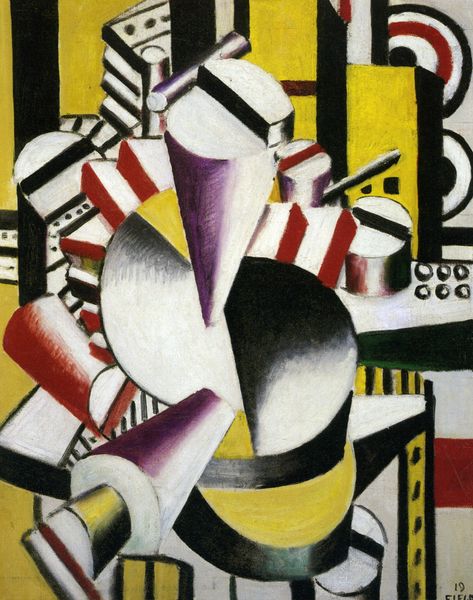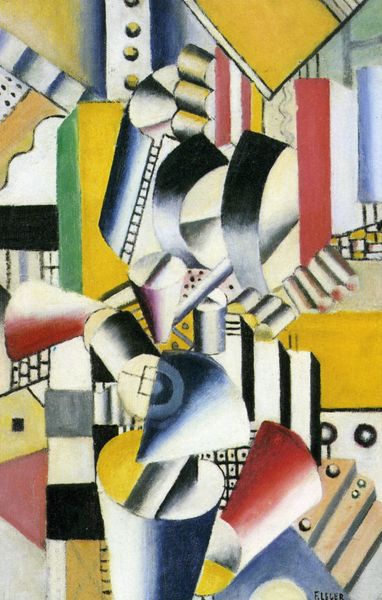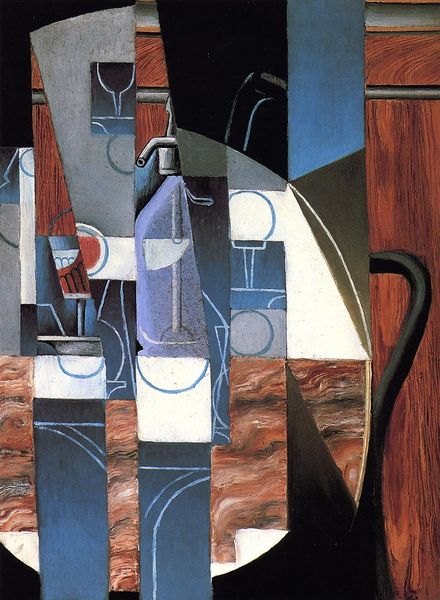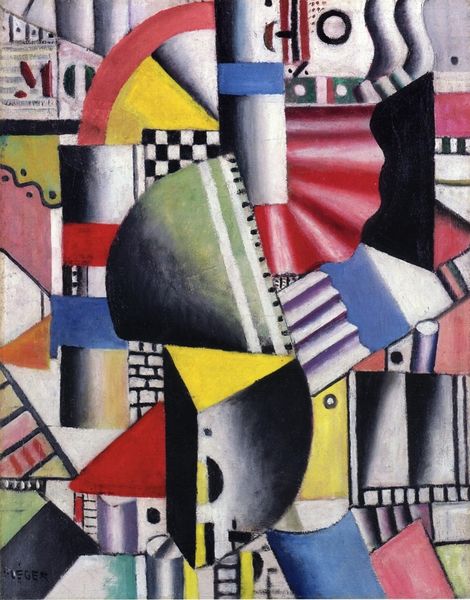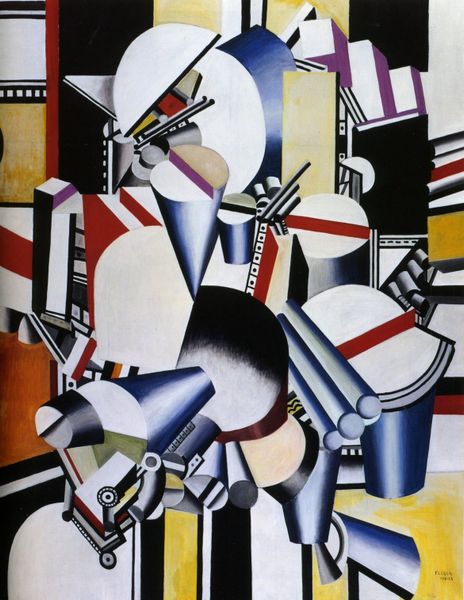
painting, oil-paint
#
cubism
#
painting
#
oil-paint
#
pop art
#
intimism
#
geometric
#
modernism
#
cubism
Copyright: Public domain US
Editor: We’re looking at Fernand Léger’s "Still life in the tankard final state" from 1921, created with oil paint. It strikes me as quite bold in its use of geometric shapes. What are your initial thoughts on its composition? Curator: Indeed, its composition reveals a deliberate orchestration of form. Léger has dispensed with traditional perspective, opting instead for a flattening of space where objects exist as independent, yet interrelated, elements. The cylindrical tankard, a recurring motif in his work, is presented not as a mere representation of an object but as a formal study in volumes and planes. Observe the stark contrasts between the red, white, and blue; how do these color choices affect the overall structure? Editor: I see that the color choices make the objects stand out against the busy background, preventing them from blending into it. I wonder about Léger’s motivations in doing that. Curator: Precisely. Léger aimed to create a visual experience akin to the dynamism of the modern, industrial world. The painting's structure reflects this by using hard-edged forms, almost mechanically rendered, and by contrasting them against softer curves. This piece emphasizes line and form and volume to define the space, making the work seem to vibrate with visual energy. Doesn't the surface remind you of architecture? Editor: Now that you mention it, I notice how Léger emphasizes vertical lines that echo architectural columns, thus framing the objects with vertical support. So, by analyzing the shapes, colors, and their relationship to each other, we gain a deeper appreciation for its impact? Curator: Correct. Ultimately, Léger transforms mundane objects into symbols of modernity, where the aesthetic power resides in their formal arrangement. Editor: I see. Looking closely at Léger’s work gives us insight into how he interprets industrialization.
Comments
No comments
Be the first to comment and join the conversation on the ultimate creative platform.
